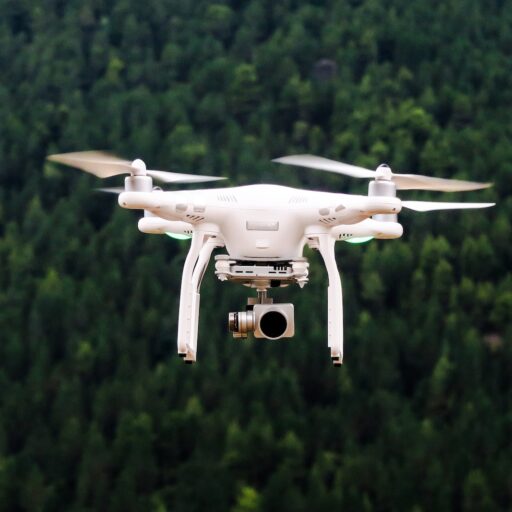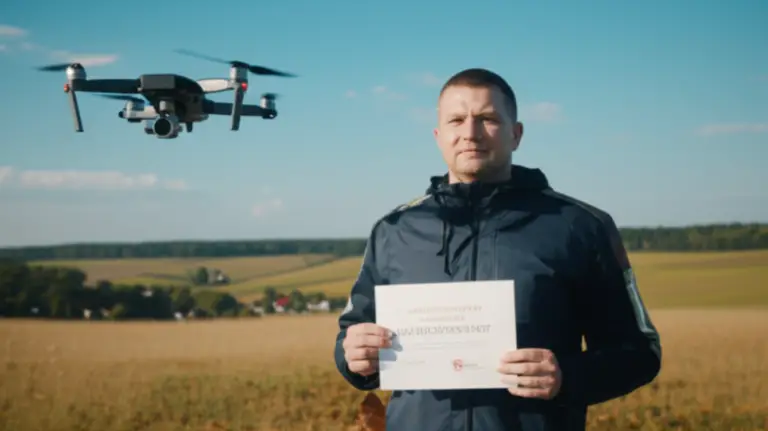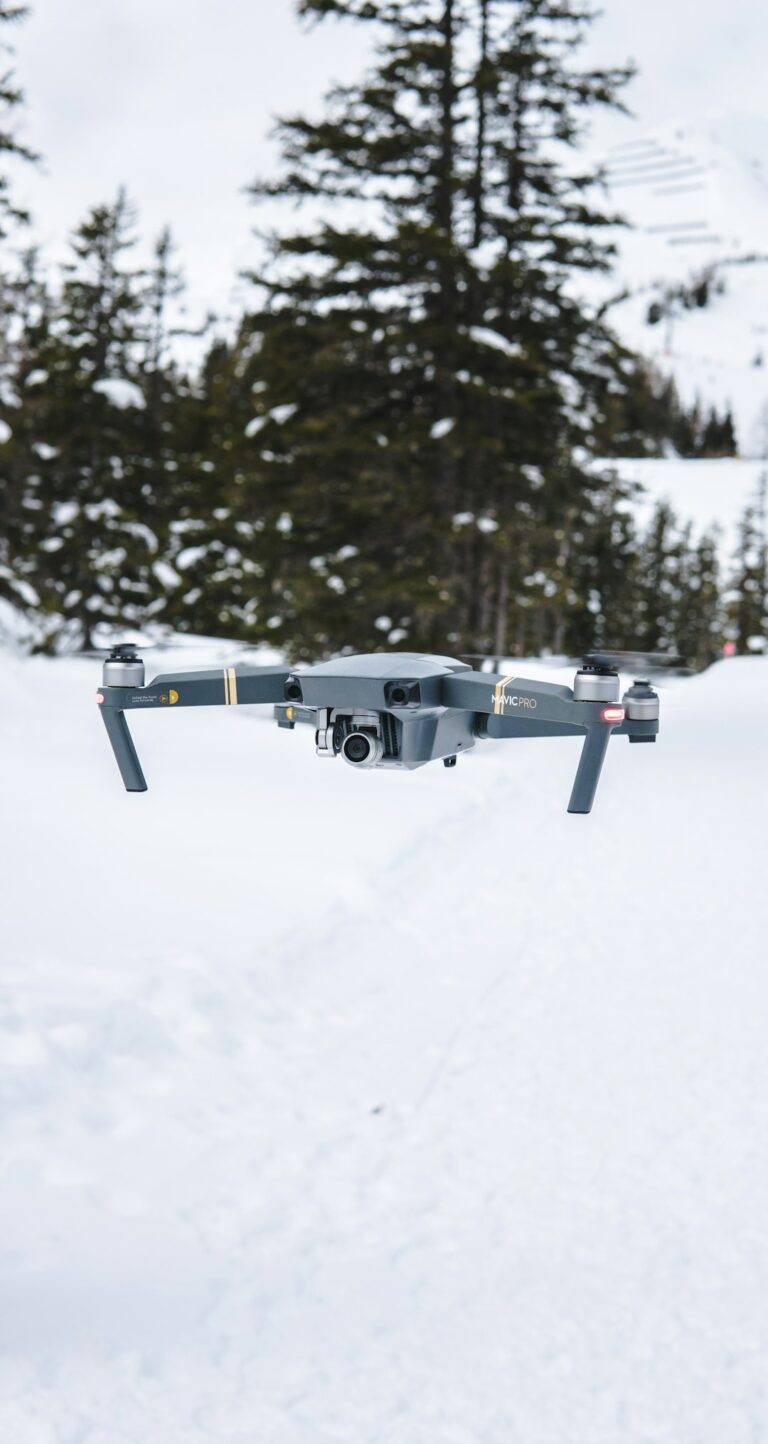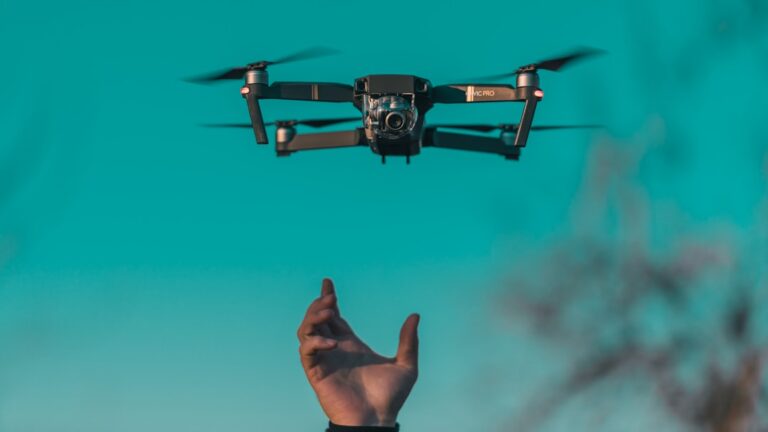Support our educational content for free when you purchase through links on our site. Learn more
How Drone Statistics Shape Smarter Regulations in 2025 🚁
Did you know that over 3 million drones are buzzing through U.S. skies today, yet unauthorized flights near airports still cause thousands of safety alerts annually? At Drone Brands™, we’ve seen firsthand how raw data—from incident reports to economic trends—acts as the secret sauce behind evolving drone regulations. This article unpacks how drone statistics drive the creation of smarter, safer, and more innovation-friendly rules that keep both pilots and the public happy.
Stick around as we reveal surprising ways data influences everything from no-fly zones and Remote ID to privacy concerns and international policy harmonization. Plus, we’ll share insider stories from our aerial adventures that highlight why numbers truly matter when it comes to flying responsibly.
Key Takeaways
- Accident and incident data directly inform safety protocols and enforcement priorities, reducing near-misses and crashes.
- Flight volume and location statistics shape no-fly zones, geofencing, and airspace management strategies.
- Registration and licensing data improve operator accountability and compliance rates.
- Economic and market trends help regulators balance innovation with public safety and privacy concerns.
- Remote ID and UTM systems rely heavily on real-time data to integrate drones safely into national airspace.
- Global data sharing fosters harmonized international drone regulations for seamless cross-border operations.
Ready to explore the data-driven future of drone regulations? Check out our Drone Laws and Regulations guides and gear up with trusted brands like DJI to stay compliant and ahead of the curve.
- 👉 Shop DJI Drones on: Amazon | DJI Official
- Explore Beginner Drones: Amazon | Drone Brands™ Beginner Drones
Table of Contents
- ⚡️ Quick Tips and Facts
- 📜 The Genesis of Drone Regulations: A Historical Flight Path
- 📊 The Numbers Game: How Accident and Incident Data Drive Safety Protocols
- ✈️ Airspace Guardians: How Flight Data Shapes No-Fly Zones and Restricted Airspace
- 📝 The Paper Trail: Registration, Licensing, and Enforcement Data’s Role in Accountability
- 💰 The Economic Pulse: How Industry Growth Statistics Influence Policy
- 🕵️♀️ Privacy & Public Trust: Shaping Regulations Through Consumer Insights and Incident Reports
- 📡 Remote ID & Beyond: Leveraging Data for Airspace Integration and Identification
- 🚀 The Tech Frontier: How Innovation Data Informs Future-Proof Regulations
- 🌍 A Global Perspective: International Data Sharing and Harmonization Efforts
- 🚧 The Road Ahead: Challenges and Opportunities in Data-Driven Regulation
- ✅ Conclusion: Flying Forward with Data-Driven Decisions
- 🔗 Recommended Links: Your Go-To Resources
- ❓ FAQ: Your Burning Questions Answered
- 📚 Reference Links: Our Sources
⚡️ Quick Tips and Facts
Welcome to the thrilling world where drone statistics and regulations tango! At Drone Brands™, our aerial adventures have taught us that understanding the numbers behind drone flights isn’t just geeky—it’s essential for safe skies and smart policies. Here are some quick nuggets to get you buzzing:
- ✅ Nearly 3 million drones are registered in the U.S. alone, with commercial and recreational users soaring alike. (FAA Drone Data)
- ✅ Over 2,000 drone sightings near airports reported since 2021, causing multiple flight disruptions. (GAO Report)
- ✅ Remote ID is the digital license plate for drones, transmitting ID, location, and performance data to improve enforcement.
- ✅ In the EU, drones are categorized by risk and weight, with strict rules for operations beyond visual line of sight (BVLOS). (EASA Drone Regulations)
- ✅ Privacy concerns and noise complaints are rising, influencing local regulations and community acceptance.
- ✅ Data-driven geofencing is becoming a frontline defense against unauthorized flights near airports and sensitive sites.
- ✅ The drone industry’s economic boom is pushing regulators to balance innovation with safety and privacy.
Curious how these stats shape the rules that keep drones flying responsibly? Buckle up—we’re diving deep!
For a comprehensive dive into drone data and trends, check out our detailed Drone Statistics article.
📜 The Genesis of Drone Regulations: A Historical Flight Path
Before drones became the buzzing stars of the sky, regulations were a blank canvas. The rapid rise of drones—from hobbyist toys to commercial powerhouses—forced regulators worldwide to catch up fast.
Early Days: From Model Planes to Commercial Tools
- In the early 2000s, drones were mostly recreational gadgets, loosely regulated.
- By the 2010s, commercial applications exploded: aerial photography, agriculture, surveying, and delivery.
- The FAA began requiring drone registration in 2015, marking the first major regulatory milestone in the U.S.
- Europe’s EASA introduced harmonized rules in 2021, categorizing drones by risk and operational complexity.
Why Statistics Became the Co-Pilot for Regulation
- Regulators realized anecdotal evidence wasn’t enough.
- Data on incidents, flight volumes, and operator behavior became critical to crafting effective, balanced rules.
- For example, the FAA’s Remote ID rule was shaped by data showing enforcement challenges without operator identification.
Our own pilots recall the early days when flying near airports was a wild west—now, thanks to data-driven rules, the skies are safer and more predictable.
📊 The Numbers Game: How Accident and Incident Data Drive Safety Protocols
Data doesn’t lie, and when it comes to drone safety, it tells a story that regulators can’t ignore.
Crashes, Close Calls, and Lessons Learned: Analyzing Flight Safety Statistics
- Since 2021, over 60 incidents forced manned aircraft to take evasive action due to drones near airports. (GAO Report)
- Most incidents involve unauthorized flights, often by hobbyists unaware of restrictions.
- Incident reports help identify common risk factors: flying too close to airports, beyond visual line of sight, or in restricted airspace.
Our Drone Brands™ team once encountered a near-miss during a commercial shoot near a busy heliport—luckily, quick reflexes and adherence to regulations prevented disaster.
The Role of Near-Miss Reporting Systems in Preventing Future Incidents
- Near-miss reporting is voluntary but invaluable.
- FAA’s UAS Safety Reporting System (UAS-SRS) collects pilot reports to identify trends.
- Data from these reports informs training programs and regulatory updates.
Pro tip: If you’re a drone pilot, always report near-misses. It’s a community effort to keep the skies safe!
✈️ Airspace Guardians: How Flight Data Shapes No-Fly Zones and Restricted Airspace
Flight data is the backbone of airspace management, helping regulators draw invisible lines that keep drones where they belong.
Unauthorized Flights: Quantifying the Challenge Around Airports and Critical Infrastructure
- Airports see daily drone sightings, with some causing flight delays or cancellations.
- Examples include the July 2022 shutdown at Reagan Washington National Airport and June 2023 incident at Pittsburgh International Airport.
- Data shows unauthorized flights often cluster near sensitive areas, prompting tighter restrictions.
Geofencing and Airspace Management: Data’s Role in Dynamic Restrictions
- Geofencing uses GPS data to create virtual boundaries.
- Drone manufacturers like DJI integrate geofencing to prevent flights in restricted zones.
- Regulators rely on flight data to update geofencing maps dynamically, balancing safety and operational freedom.
Our pilots love geofencing for peace of mind but sometimes find it frustrating when boundaries are overly conservative or outdated.
📝 The Paper Trail: Registration, Licensing, and Enforcement Data’s Role in Accountability
Accountability starts with knowing who’s flying what—and where.
Who’s Flying What? Understanding Drone Ownership and Operator Demographics
- FAA data shows a mix of recreational and commercial operators, with commercial use growing rapidly.
- Demographics help regulators tailor education and enforcement efforts.
- For example, younger hobbyists may need more outreach on no-fly zones, while commercial pilots focus on compliance with operational permissions.
Compliance Rates and Enforcement Actions: What the Data Tells Regulators
- Enforcement data reveals common violations: flying without registration, ignoring altitude limits, or operating near airports.
- Remote ID compliance is improving but still faces hurdles due to lack of awareness and technology gaps.
- Law enforcement often struggles to locate operators despite Remote ID, highlighting a need for better tools and training.
Our team has seen firsthand how clear registration and licensing rules reduce confusion and improve safety culture.
💰 The Economic Pulse: How Industry Growth Statistics Influence Policy
The drone industry is booming, and regulators must keep pace without clipping innovation’s wings.
From Hobby to Industry: Tracking Commercial Drone Adoption and Market Size
- The global drone market is expected to reach $58 billion by 2026. (MarketsandMarkets Report)
- Commercial sectors include agriculture, construction, delivery, and media.
- Data on adoption rates helps policymakers forecast infrastructure needs and safety challenges.
Job Creation and Investment Trends: Balancing Innovation with Oversight
- Drone-related jobs are growing, from pilots to data analysts.
- Investment trends show increasing venture capital in drone tech startups.
- Regulators use economic data to justify flexible frameworks that encourage growth while ensuring public safety.
Our pilots have transitioned from weekend hobbyists to full-time professionals, thanks to supportive regulations informed by solid data.
🕵️♀️ Privacy & Public Trust: Shaping Regulations Through Consumer Insights and Incident Reports
Public perception matters. Drone statistics reveal the human side of regulation.
Noise Complaints, Surveillance Concerns, and Data Security: Public Perception Metrics
- Increasing noise complaints and fears of surveillance have led to stricter local ordinances.
- Privacy incident reports highlight concerns about unauthorized filming.
- Regulators analyze these data points to craft rules balancing innovation and community rights.
Balancing Innovation with Community Acceptance: The Human Element in Regulation
- Studies show that community engagement and transparency improve compliance.
- Data-driven outreach programs help educate operators and reduce conflicts.
- Our pilots often participate in local forums to build trust and share best practices.
📡 Remote ID & Beyond: Leveraging Data for Airspace Integration and Identification
Remote ID is a game-changer, but its success depends on data integration.
The Imperative of Identification: Why Tracking Drones Matters
- Without Remote ID, drones are like cars without license plates—hard to track and regulate.
- Remote ID transmits drone ID, location, and velocity to ground stations and other airspace users.
- This data helps law enforcement identify rogue operators quickly.
UTM (Unmanned Traffic Management): Building the Future of Airspace with Data
- UTM systems integrate flight plans, Remote ID data, and airspace restrictions.
- They enable safe BVLOS operations and dynamic airspace management.
- FAA and NASA are testing UTM prototypes, relying heavily on real-time data.
Our pilots are excited about UTM’s potential to unlock new commercial opportunities while keeping skies safe.
🚀 The Tech Frontier: How Innovation Data Informs Future-Proof Regulations
Technology evolves fast, and regulations must keep up.
Autonomous Operations and AI: Anticipating Regulatory Needs for Advanced Capabilities
- AI-powered drones can navigate complex environments with minimal human input.
- Data from test flights informs safety standards and certification processes.
- Regulators face challenges in defining liability and operational limits for autonomous drones.
Counter-Drone Technologies: Data-Driven Solutions for Security Challenges
- Detection and mitigation systems use radar, RF scanning, and AI analytics.
- FAA is assessing how these technologies impact drone traffic management.
- Data on counter-drone effectiveness guides policy on airport security and critical infrastructure protection.
🌍 A Global Perspective: International Data Sharing and Harmonization Efforts
Drones don’t respect borders, so neither should regulations.
Learning from Others: How Global Drone Statistics Influence Domestic Policy
- The EU’s EASA regulations serve as a model for harmonization.
- Data sharing between countries helps identify emerging risks and best practices.
- For example, Germany’s investment in geospatial drone tech informs EU-wide policies.
Towards a Unified Sky: The Push for International Standards and Data Exchange
- ICAO is working on global drone standards.
- Data interoperability is key for cross-border drone operations.
- Our pilots dream of seamless international flights, enabled by shared data and harmonized rules.
🚧 The Road Ahead: Challenges and Opportunities in Data-Driven Regulation
The drone sky is bright but not without clouds.
The Data Gap: Where We Need More Information to Make Smarter Rules
- Many incidents go unreported, creating blind spots.
- Law enforcement’s limited access to Remote ID data hampers enforcement.
- More granular data on operator behavior and technology performance is needed.
Predictive Analytics and Proactive Policy: Using Data to Anticipate Trends
- AI and machine learning can forecast high-risk flights or areas.
- Proactive regulations could prevent incidents before they happen.
- Our pilots envision a future where data-driven alerts keep everyone safe and compliant.
If you want to understand the practical requirements for flying drones safely and legally in the near future, don’t miss the insightful video by Pilot Institute titled “What are the rules to fly your drone in 2025?” (#featured-video). It breaks down the new rules under 49 USC 44809 for recreational pilots, and reminds us that failing to meet these means flying under Part 107 rules. A must-watch for all drone enthusiasts!
For more on how regulations evolve with data, explore our Drone Laws and Regulations category and stay ahead of the curve.
✅ Conclusion: Flying Forward with Data-Driven Decisions
After soaring through the intricate skies of drone statistics and regulations, one thing is crystal clear: data is the co-pilot every regulator needs. From incident reports that spotlight safety gaps to economic trends that fuel innovation-friendly policies, numbers are the compass guiding drone laws into the future.
Our Drone Brands™ team has witnessed firsthand how data-driven regulations transform chaotic skies into orderly airspace, enabling us to push the boundaries of aerial adventures safely and confidently. The challenges remain—especially around enforcement, privacy, and harmonizing international standards—but the path forward is illuminated by continuous data collection, analysis, and collaboration.
Remember the question we teased earlier—how can regulators balance innovation with safety and privacy? The answer lies in dynamic, evidence-based policies that evolve alongside drone technology and user behavior. Remote ID, geofencing, and UTM systems are just the beginning. As predictive analytics and AI mature, expect regulations to become smarter, more proactive, and more tailored to real-world conditions.
So, whether you’re a hobbyist buzzing your backyard or a commercial pilot surveying vast landscapes, know that the numbers behind the scenes are working hard to keep your flight legal, safe, and enjoyable.
Ready to keep flying high with confidence? Stay informed, stay compliant, and keep an eye on the data-driven horizon!
🔗 Recommended Links: Your Go-To Resources
Looking to gear up or dive deeper into drone tech and regulations? Here are some top picks from our flight deck:
-
DJI Drones (with Geofencing & Remote ID):
Amazon | DJI Official Website -
Pilot Institute – Drone Training Courses:
Amazon Books | Pilot Institute Website -
Books on Drone Regulations and Safety:
-
Remote ID Technology & UTM Systems:
FAA Remote ID Overview | NASA UTM Project
❓ FAQ: Your Burning Questions Answered
What role do accident reports play in shaping drone regulations?
Accident and incident reports are critical feedback loops for regulators. They reveal common causes of crashes or near-misses, such as unauthorized flights near airports or operator error. This data informs targeted safety protocols, training requirements, and enforcement priorities. For example, the FAA’s Remote ID rule was partly motivated by difficulties in identifying operators involved in incidents. Without these reports, regulations would be reactive and less effective.
How do drone usage statistics influence airspace management policies?
Usage statistics—covering flight volumes, locations, and operator types—help regulators design airspace classifications and restrictions. For instance, high drone activity near airports has led to tighter no-fly zones and geofencing requirements. Usage data also supports the development of Unmanned Traffic Management (UTM) systems that dynamically allocate airspace to drones and manned aircraft, ensuring safety and efficiency.
What impact do drone registration numbers have on regulatory decisions?
Registration numbers provide a baseline for understanding the drone population. They help estimate compliance rates, identify growth trends, and allocate enforcement resources. High registration volumes can prompt regulators to streamline processes or introduce tiered licensing. Conversely, low registration compliance signals a need for better education or stricter enforcement.
Can drone incident data inform the development of safety standards?
Absolutely. Incident data uncovers technical and operational vulnerabilities—for example, battery failures, GPS signal loss, or pilot error—that safety standards must address. Manufacturers and regulators use this data to improve drone design, mandate fail-safes, and set operational limits like maximum altitude or distance.
Do drone market trends affect the creation of laws governing drone usage?
Yes, market trends such as the rise in commercial drone applications or autonomous drone delivery influence regulations. Rapid industry growth demands flexible frameworks that encourage innovation while managing risks. Economic data also helps justify investments in infrastructure like UTM and enforcement technologies.
How are drone privacy concerns addressed in the development of regulations?
Privacy concerns, often highlighted through public complaints and incident reports, drive regulations on data collection, storage, and usage by drone operators. Many jurisdictions require operators to avoid capturing personally identifiable information without consent. Regulators also promote transparency and community engagement to build trust.
What influence do public opinion polls on drones have on regulatory frameworks?
Public opinion shapes political will and regulatory priorities. Polls revealing concerns about noise, surveillance, or safety can lead to stricter local ordinances or national policies. Conversely, positive perceptions of drones’ economic and social benefits can encourage more permissive regulations. Regulators often use these insights to balance innovation with community acceptance.
📚 Reference Links: Our Sources
- FAA Drone Registration & Remote ID
- GAO Report on Drone Safety Near Airports
- EASA Civil Drone Regulations
- MarketsandMarkets Commercial Drone Market Report
- NASA Unmanned Traffic Management Project
- WeRobotics: Reflections from our Drone Regulations Co-Creation Workshops in Kenya
- Pilot Institute Drone Training
- DJI Official Website
Fly safe, fly smart, and keep those propellers spinning! 🚁✨








